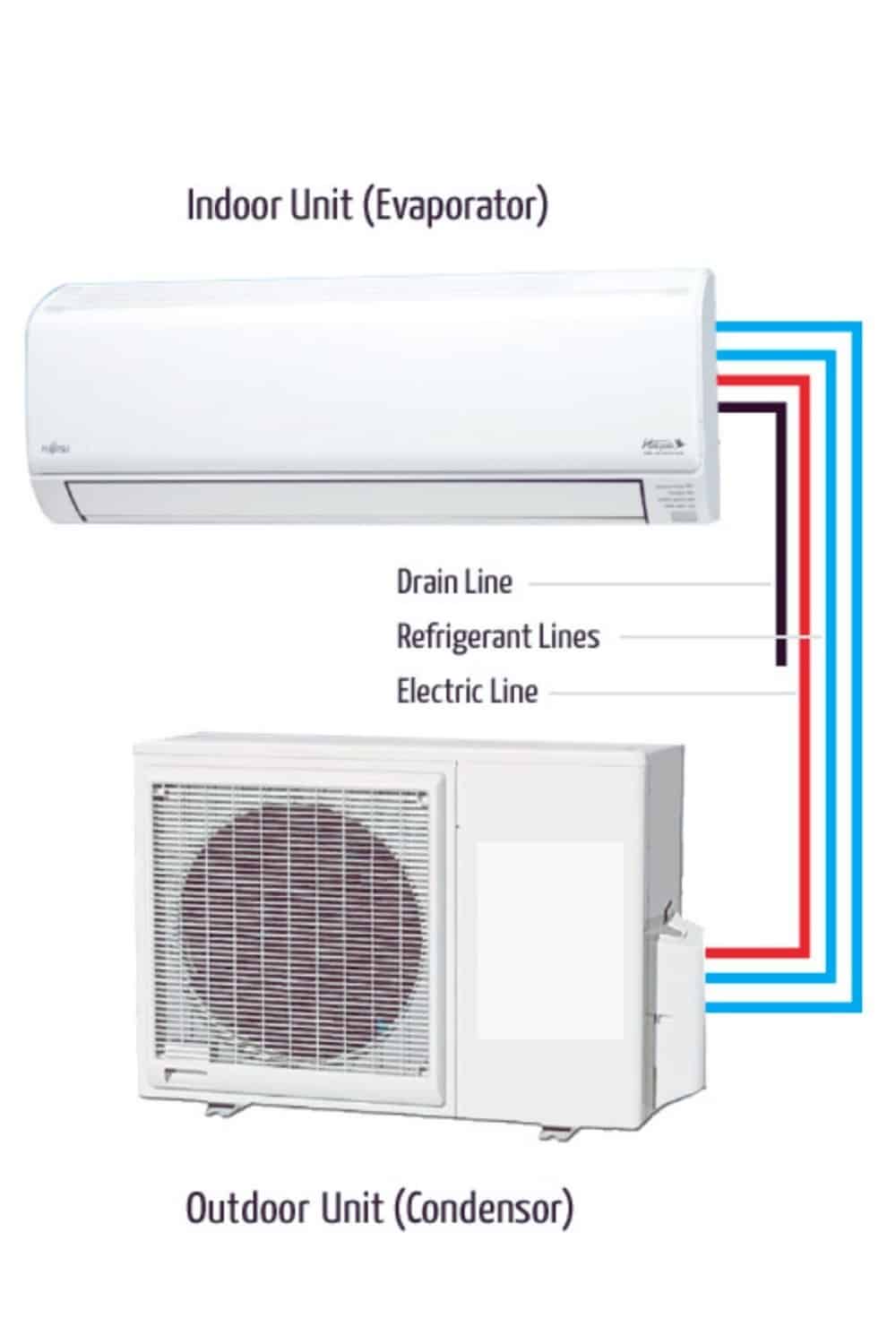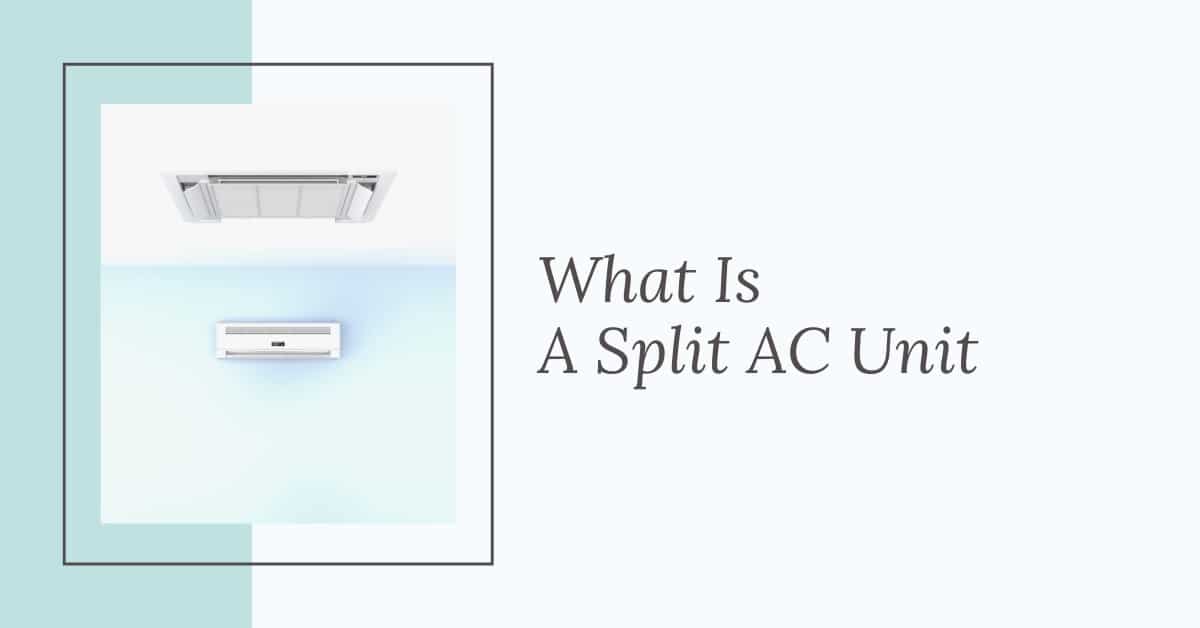A split air conditioner unit is probably what you think of when you imagine an air conditioning system. It’s the most traditional type of air conditioner and the most common one, comprised of an outdoor condenser unit that pumps cold air into the same air handler used by your furnace. What is a split AC unit, what isn’t, and why are you probably going to end up buying one.
When buying a new air conditioner, there are many factors to consider – how much it’ll cost you upfront, what your energy bills will look like long term, and how your new parts will interact with your existing setup. If you’ve never bought an air conditioner before, it can be a little overwhelming and difficult to get your bearings in the midst of a lot of terminologies.
How Does a Mini-Split Work?
Split ac systems have two main components, an outdoor compressor and an indoor air-handling unit. A split AC unit allows you to integrate the various parts of your HVAC system while keeping your air conditioner condenser unit located out of earshot. As well, the separation of the “hot” and “cold” portions of the system makes for better ventilation and easier drainage with less heat waste.

These are the most common quite simply because they’re the most convenient: the split design allows a lot more flexibility for placement and helps ensure maximum efficiency because you won’t be pumping the cold air through any more space than you absolutely have to.
A packaged air conditioner is exactly the opposite of a split unit and contains the compressor and the air handler in a single unit.
The “hot” and “cold” ends of the air conditioner are in one neat package that can be installed either outdoors or on your roof. These are ideal for smaller spaces, where there may not be sufficient room for the multiple parts that make up a more traditional split unit air conditioner.
These units do not need to be linked with an existing furnace or air handler in order to function and can cool anywhere from one room to a whole house with only a single unit. That said, the units themselves are much larger (after all, they contain all the same parts in one) and more cumbersome, and depending on their placement, they can be a little less efficient at distributing air. That said, if you’re crunched for space, packaged air conditioners are an excellent alternative.
Both split unit air conditioners and packaged systems can double as backup heaters with a simple heat pump system, but neither one will perform quite as well in areas with extremely cold winters.
Though split ac units tend to take up total space, especially if you have a furnace as well as a condenser, air handler, fan, and evaporator unit, they ultimately take up less space if you require a dedicated heater because they share many of the same mechanisms. And if you live in an extreme climate, having both is crucial to keeping your home comfortable year-round.
That said, if your HVAC specialist has been suggesting a “split unit” to you, he might not be talking about your regular AC setup at all. While the term is used generally to refer to an air conditioning system with an outdoor compressor and an indoor air handler, it cal also be used to mean a ductless split system. These function on the same basic principle – lower the temperature of your coolant outdoors where the heat can dissipate easily, then pump the cooled refrigerant indoors to lower the temperature of the air.
Split Ac Unit VS Ductless Mini-split
The difference is, in a ductless mini-split, the refrigerant is delivered all the way into your home rather than to a larger air handler in your garage or basement. There are no ducts at all – just narrow pipes that run directly to small air handlers mounted on the wall, ceiling, or floor in 1-4 rooms in your home.
Because the air doesn’t have to move through your ducts, meaning there’s little or no room for heat loss, mini splits are among the most efficient forms of air conditioning. And because the blower in each room can be individually controlled, you’ll only get cooling where you need it when you need it – no more thermostat wars or hot upstairs office.
When it comes to space considerations, ductless mini splits have the smallest footprint outdoors. The condensers tend to be smaller than those of traditional split unit air conditioners and much smaller than packaged units.
However, they do leave a bigger mark indoors because the units that produce the air themselves are visible. As well, the heat pump varieties fell victim to the same shortcomings as their split unit and packaged system brethren.
Unless you live in a very mild climate, a ductless mini-split should probably only be used for supplementary or backup heating or cooling because they don’t have the same ability to reach your whole house at once. Ductless mini-splits are quickly becoming more popular, but if you’re space limited, you should figure out if they’re right for you before trying to work them into your layout.
Split air conditioner units are easily the most traditional kind of unit, the most versatile, and the most convenient. That’s why, unless you have some serious space constraints, it’s probably the kind that you’re going to end up with – whether you add on to it later or not. But if you are worried about the footprint of the new setup, be aware that there are other options available.
Determining what you have space for can really help narrow down the list of potential ACs. Before you eliminate anything officially, you should talk with your local HVAC specialist to make sure what you have in mind will be able to provide the cooling you need or if you need to make space for a bigger machine. Knowing what a split ac unit is will help you make a better decision.






